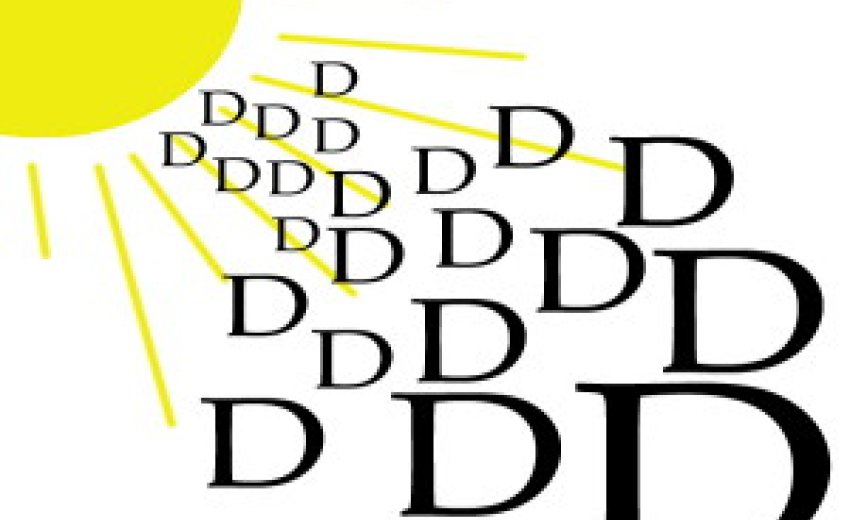
 Sunshine, not food, is where most of your vitamin D comes from. So even a healthy, well balanced diet, that provides all the other vitamins and goodness you need, is unlikely to provide enough vitamin D. Read on to find out the best ways to get enough vitamin D safely.
Sunshine, not food, is where most of your vitamin D comes from. So even a healthy, well balanced diet, that provides all the other vitamins and goodness you need, is unlikely to provide enough vitamin D. Read on to find out the best ways to get enough vitamin D safely.
What is vitamin D?
You make vitamin D under your skin when you are outside in daylight, which is the reason vitamin D is sometimes called the ‘sunshine vitamin’. A vitamin is something that helps our body function – a ‘nutrient’ – that we cannot make in our body. Vitamin D is different because even though we call it a vitamin, it is actually a hormone and we can make it in our body.
What does vitamin D do in my body?
Vitamin D helps your body absorb calcium for healthy bones and teeth. Even if you have a calcium-rich diet (for example from eating plenty of low fat dairy foods and green leafy vegetables), without enough vitamin D you cannot absorb the calcium into your bones and cells where it is needed. Vitamin D may have other important roles in the body, but there isn’t enough evidence at the moment to make any recommendations.
When is vitamin D made in skin? The amount of vitamin D you make depends on how strong the sunlight is. You will make more in the middle of the day, when the sun is strongest. You will also make more when you are in direct sunlight than in the shade or on a cloudy day.
Sun safety
It is the sun’s ultraviolet rays that allow vitamin D to be made in the body. You do not have to sunbathe to make vitamin D.
In the UK ultraviolet light is only strong enough to make vitamin D on exposed skin (on the hands, face and arms or legs) in the middle of the day (around 11am - 3pm) during April to September.
If you go out in the sun two or three times a week for at least 15 minutes (before applying sunscreen) in this period, your body will make enough vitamin D. During the winter, we get vitamin D from our body’s stores and from food sources. People over 65 or with darker skin would need more exposure. You can also make a smaller amount of vitamin D when the skin is covered by fine material.
If you are concerned about the risk of skin cancer, and always use a high factor sunscreen or cover your skin when outside, the only way to ensure a healthy vitamin D status is to take a supplement.
At risk groups for low vitamin D
- Babies and young children, and children and adolescents who spend little time playing outside Pregnant women and breastfeeding mothers
- People over 65 years old because their skin is not as good at making vitamin D
- People with darker skin tones - that is people of Asian, African, Afro-Caribbean and Middle Eastern descent – living in the UK or other northern climates
- If you always cover most of your skin when you are outside and the further north you live
- Anyone who spends very little time outside during the summer – the housebound, shop or office workers, night shift workers
- If the air is quite polluted
Which foods contain vitamin D?
Help your body get more vitamin D by eating plenty of vitamin D rich foods, including:
- Oily fish such as salmon, sardines, pilchards, trout, kippers and eel contain reasonable amounts of vitamin D
- Cod liver oil contains a lot of vitamin D (don’t take this if you are pregnant)
- Eggs, meat and milk contain small amounts but this varies during the seasons
- Margarine, some breakfast cereals, infant formula milk and some yoghurts have added or are ‘fortified’ with vitamin D. (Editor's note: We promote a vegetarian diet and a vegetarian diet can find Vitamin D in the following foods: Maitake mushrooms, portabella mushrooms, chanterelle mushrooms and any food fortified with vitamin D)
What happens if I don’t get enough vitamin D?
Some babies are born with low levels of vitamin D and some do not get enough in breast milk; this can result in fits or rickets. Older children who do not get enough vitamin D can also develop rickets. Rickets can cause permanent deformities to the bone, weaken muscles and reduced growth.
Adults who don’t get enough vitamin D can develop osteomalacia. This makes the bones softer as the minerals needed to keep them strong cannot get into the bone. People with osteomalacia experience bone pain and muscle weakness
Low levels of vitamin D may put men at increased risk of colorectal cancer and women at increased risk of developing breast cancer.
Where are vitamin D supplements available?
Vitamin D supplements and multivitamins are now widely available to buy from chemists/pharmacies, supermarkets and health food shops.
Some women who are pregnant or breastfeeding and children aged six months to four years may qualify for Healthy Start vitamins which contain vitamin D. Ask your health visitor about this.
| Who needs a vitamin D supplement |
|
Can I have too much vitamin D?
Taking a vitamin D supplement as well as spending a lot of time outside in sunshine is not a problem as your body only makes as much vitamin D as it needs. However do not take more than one supplement containing vitamin D (count cod-liver oil as a supplement).
Always choose a supplement tailored to the age group or condition, as fish liver oils and high dose multivitamin supplements often contain vitamin A, too much of which can cause liver and bone problems, especially in very young children, and the elderly.
Summary
Vitamin D helps your body absorb calcium for healthy bones and teeth. You make vitamin D under your skin when you are outside in the middle of the day in the summer months. You can get vitamin D from some foods including fortified foods or by taking a supplement. There are some at risk groups who are recommended to take daily vitamin D supplements. If you are concerned you are not getting enough vitamin D, speak to your doctor, health visitor, or ask to be seen by a dietitian.

--------------------------------------------
Related Articles:
Lack of Vitamin D is U.S. Kids "Shocking"
Vitamin D Deficiency Increases Risk for Alzheimer's Disease by up to 122%!

